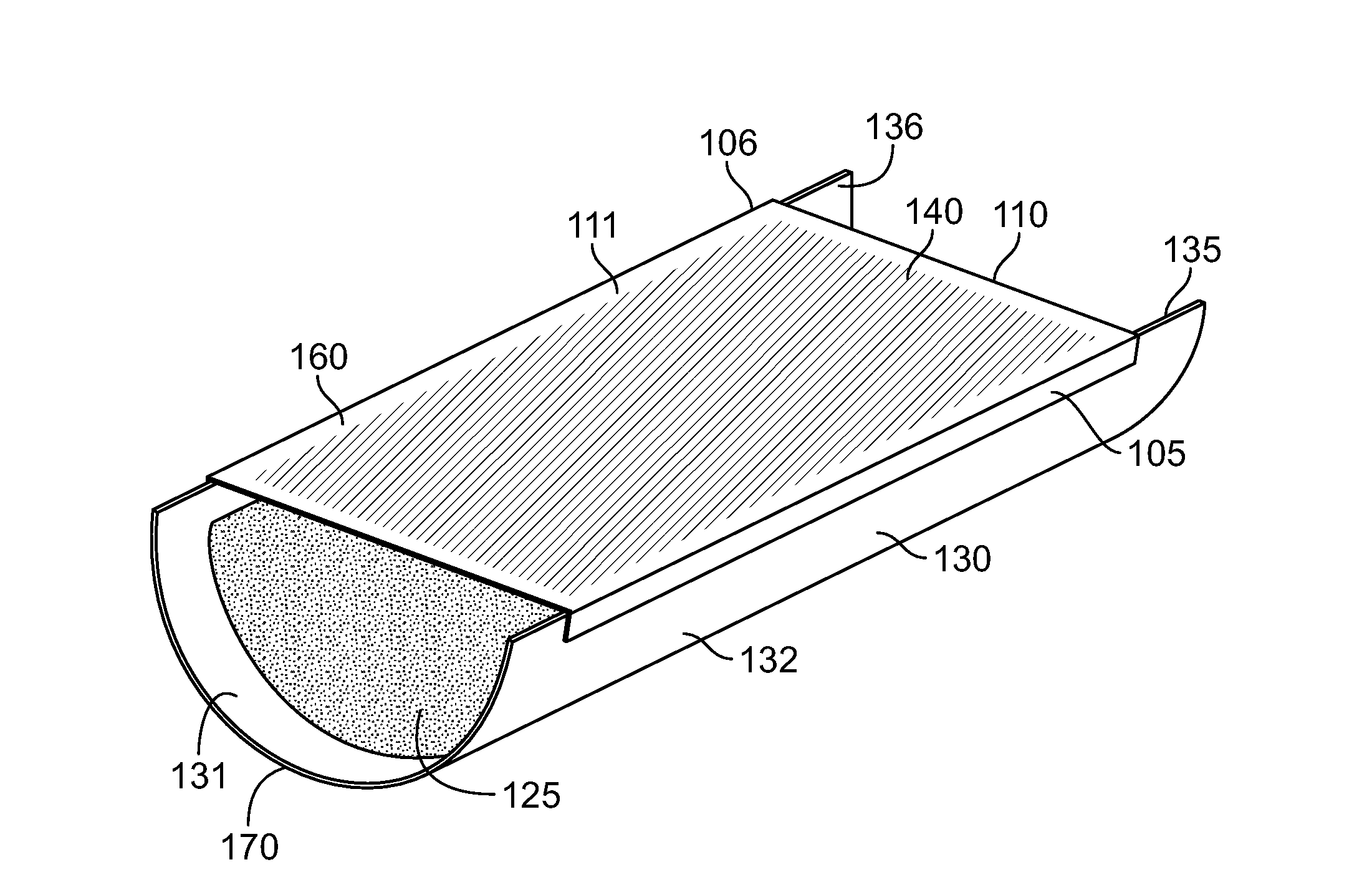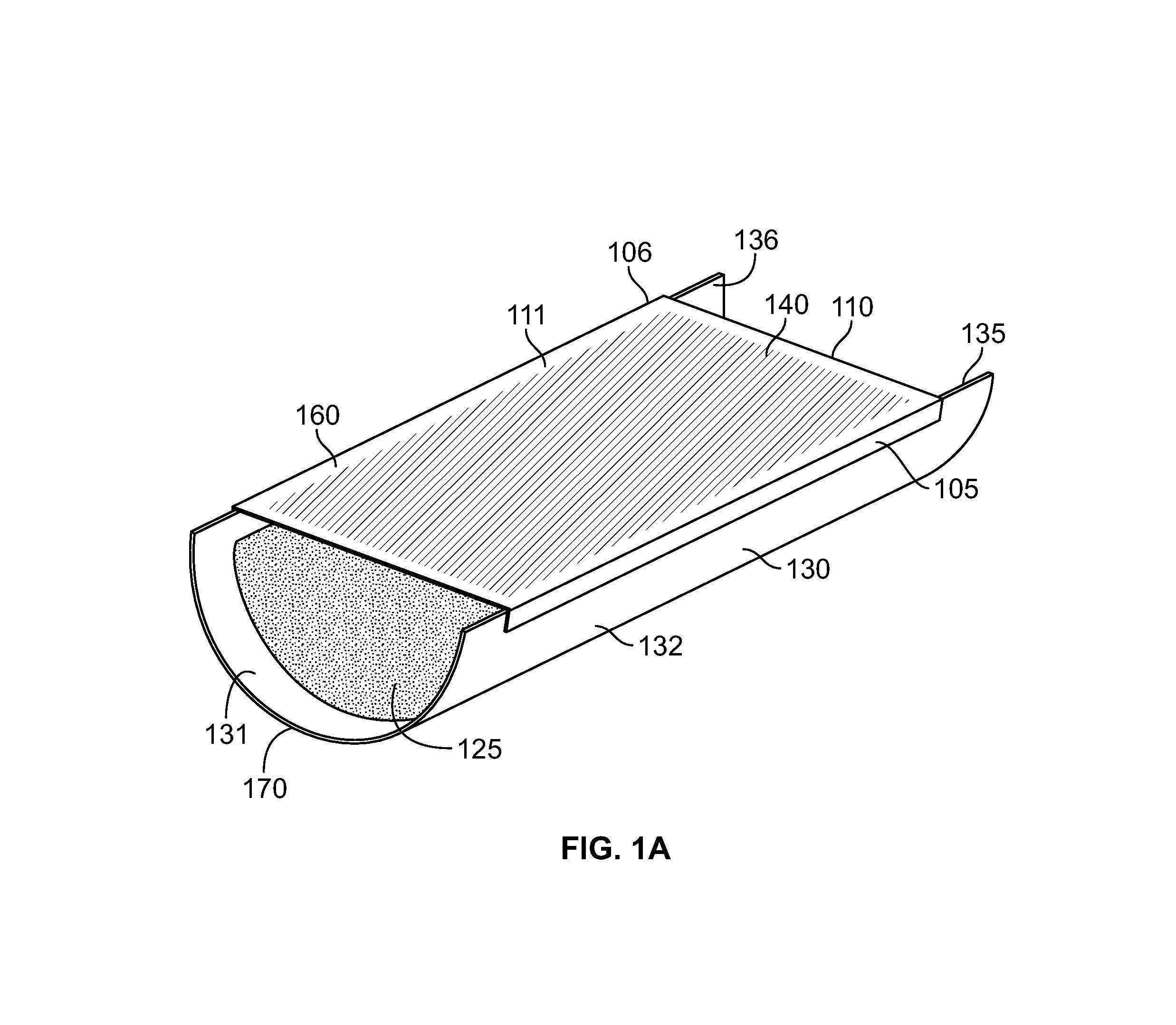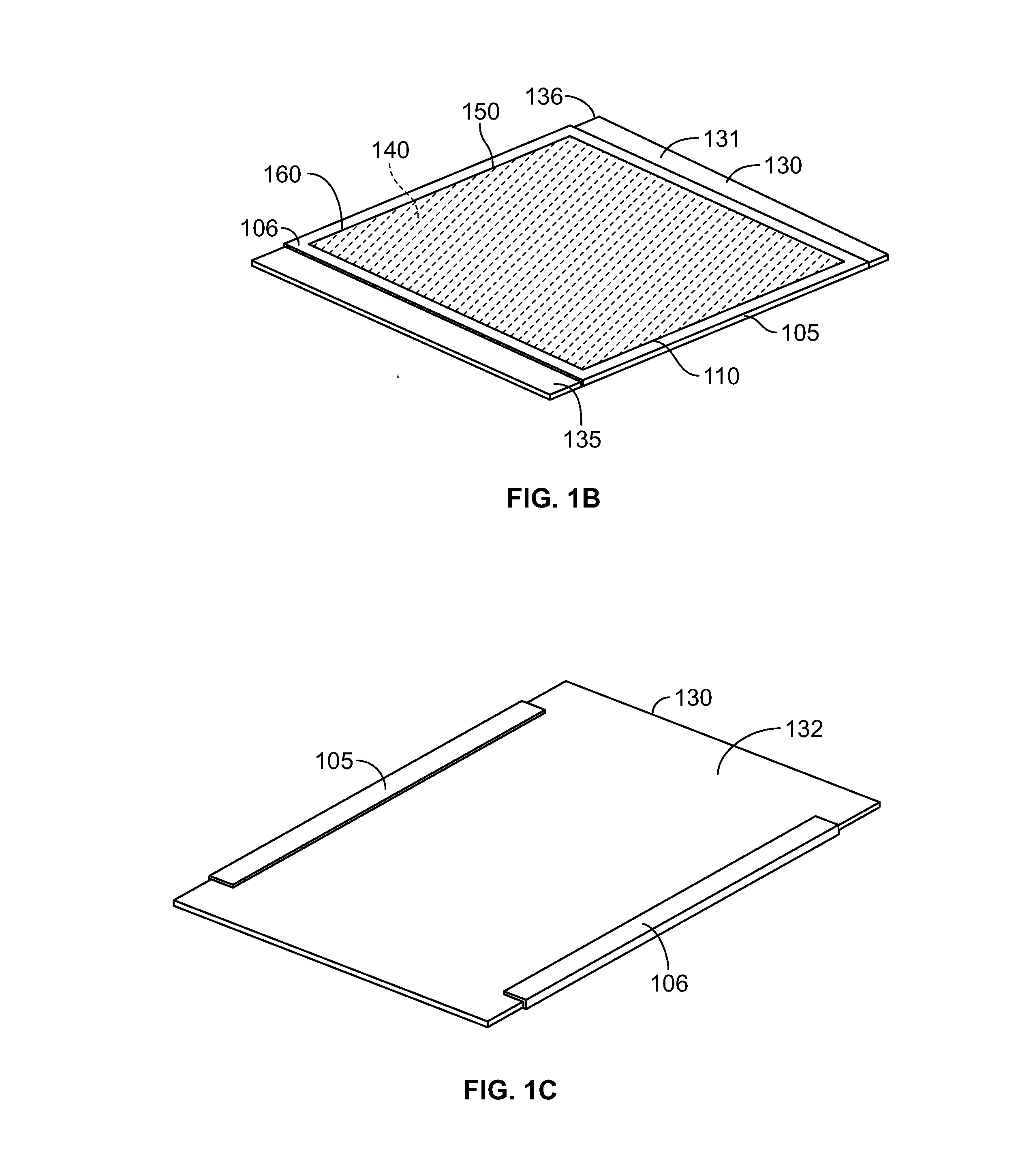Strained skin treatment devices and methods
a skin treatment and skin technology, applied in the field of strained skin treatment devices and methods, can solve the problems of overproduction of collagen, proteoglycans, and unrecognized pathophysiology
- Summary
- Abstract
- Description
- Claims
- Application Information
AI Technical Summary
Benefits of technology
Problems solved by technology
Method used
Image
Examples
example i
[0063]In this example, five (5) dressings were strained at 40% and 5 dressings were strained at 60%. The dressings were constructed of MED 82-5010-10 by NUSIL TECHNOLOGY LLC (Carpenteria, Calif.). A maximum of 5 particulates per sheet less than or equal to 0.020″ and a maximum of 5 surface gels and / or bubbles per sheet a size no greater than 0.020″ were present in the samples. The samples were initially 8″ (+−0.02″)×1″ (+−1″) with a thickness of 0.010″. The samples had a durometer value of about 50 (Shore A scale), a tensile strength of about 1,450 psi, elongation of about 1000% and a specific gravity of about 1.16. Six inch (6″) centered gage marks were added. The 40% strain samples' gage lengths increase to 8.4″ when strained. The 60% strain samples' gage lengths increase to 9.6″ when strained. The samples were attached in a strained configuration to sample fixtures or clamps with a locking bar between the sample fixtures. Samples fixtures were constructed of Acrylic (PMMA) and co...
example ii
[0066]In this example, 10 dressing membranes were strained at 45%. The dressing membranes were constructed of polyurethane by 3M (St. Paul, Minn.). The samples were initially 8″ (+−0.02″)×1″ (+−1″) with a thickness of 0.002″. The samples had a tensile strength of about 2.2 lbs / in, and elongation of about 300%. Six inch (6″) centered gage marks were added. The 45% strain samples' gage lengths increase to 8.7″ when strained. The samples were attached in a strained configuration to sample fixtures or clamps with a locking bar between the sample fixtures. Samples fixtures were constructed of Acrylic (PMMA) and coated with an anti-skid tape. When tested, the ends of the sample fixtures were attached to grips of a Tensile Tester Chatillon Model TCD225, 50 LBF load cell. Measurements were then taken after releasing the locking bar. The samples were stored in the test lab at ambient lab temperatures for the duration of the test. The tensile forces of the dressings were measured at various t...
PUM
| Property | Measurement | Unit |
|---|---|---|
| time | aaaaa | aaaaa |
| time | aaaaa | aaaaa |
| time | aaaaa | aaaaa |
Abstract
Description
Claims
Application Information
 Login to View More
Login to View More - R&D
- Intellectual Property
- Life Sciences
- Materials
- Tech Scout
- Unparalleled Data Quality
- Higher Quality Content
- 60% Fewer Hallucinations
Browse by: Latest US Patents, China's latest patents, Technical Efficacy Thesaurus, Application Domain, Technology Topic, Popular Technical Reports.
© 2025 PatSnap. All rights reserved.Legal|Privacy policy|Modern Slavery Act Transparency Statement|Sitemap|About US| Contact US: help@patsnap.com



